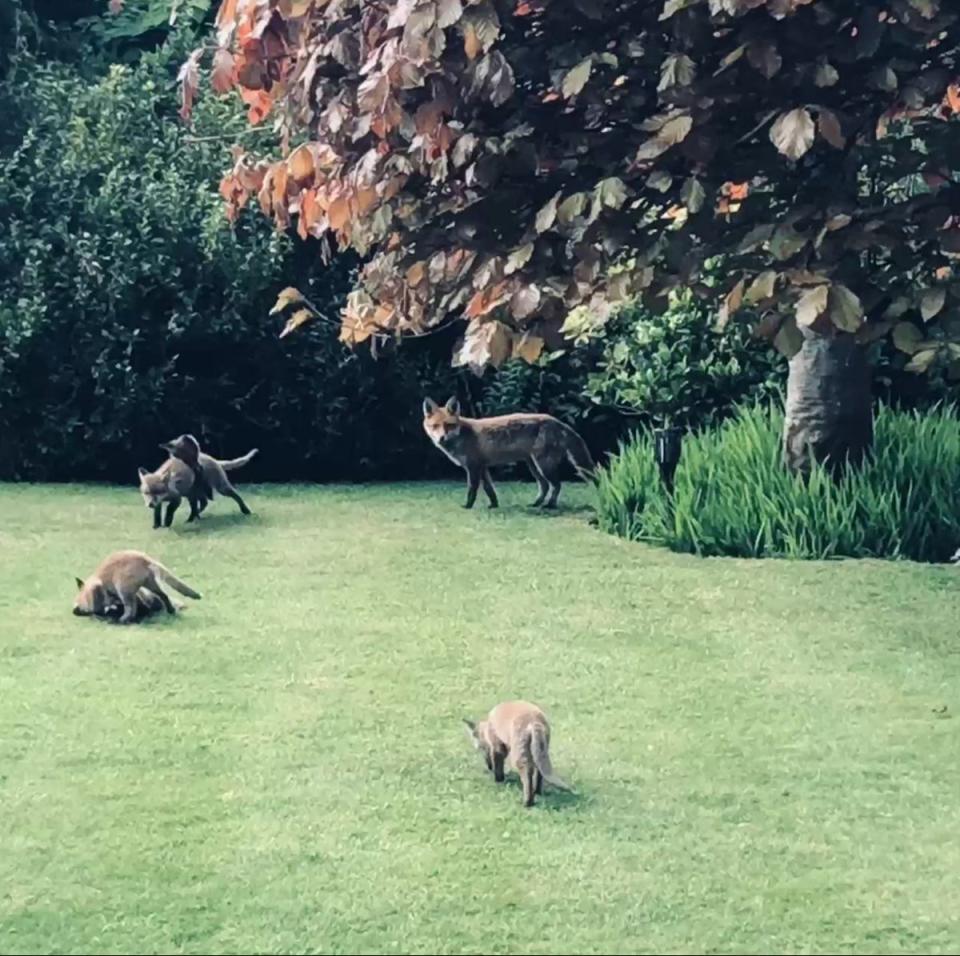London foxes: urban menace or misunderstood?

There’s a fox on the loose in London — and it has DJ-turned-author Annie Mac’s Nike trainer. It was a sunny day in May when a particularly brazen fox crept into her lounge to pilfer the mint green Air Force 1. A day later, Ricky Gervais uploaded footage of a family of foxes playing on his lawn. One cub, with a pile of dirt behind him, was attempting to dig his way to China.
The urban fox has been creeping ever further into Londoners’ lives of late, rooting through bins, frolicking in gardens, and making THAT screeching night-time mating call. Foxes, by no fault of their own, have come to symbolise London’s sleaze; these days, it’s as common to see a fox on the steps of Downing Street as it is excited partygoers.
While foxes have been around in the capital since the end of the First World War, their numbers have boomed in the past three decades. The expanding sprawl of the city — offering foxes free accommodation and leftover takeaways — can help explain these increases. The London Wildlife Trust estimates that there are 10,000 foxes in the city.
Having lived side-by-side for so long, you would expect a natural harmony to have developed between foxes and humans. However, most cultural references to foxes bely a certain uneasiness on our part. A fox is described in the Cambridge Dictionary as “someone who is clever and good at deceiving people”. It’s “fox by name, fox by nature” for the institutions that have chosen the animal as their brand. Think Fox News, accused of being good at deceiving people out of the truth, and Foxy Bingo: good at snatching the inheritance of grandchildren.

A fox’s supposed cunning nature has made it a creature of condemnation for the public over the years. When, in 2013, a fox attacked a baby boy in London, then mayor Boris Johnson was quick to deride the London fox as “a pest and a menace”. The attack prompted a flood of antagonism towards the animal, with people seeking out ways to not only discourage foxes, but exterminate them altogether. Shockingly, in 2020, at least two foxes were killed in south-east London by a crossbow-wielding assailant.
Today, foxes are still proving divisive. “Foxes are no good,” said one disgruntled Londoner online, “stealing our rubbish. Having loud sex”. While some people are prone to complaining, others have reason to be irked.
“A fox made its way into my home by somehow bypassing the locked cat flap”, says Max, who was living in Bromley at the time. “It proceeded to eat the cat food, turn the kitchen bin out, and crap on the living room carpet. It ran away when I got home from work. The problem with foxes in London is that people think they’re cute and feed them. They’re too bold now, and have such a massive population in London that it’s pointless trying to do anything. They’ve already won.” While Max feels defeated, others are fighting back. In a shocking turn of events, some middle-aged men have taken to marking their gardens with their own scent in a bid to deter foxes from their property — often slipping out under the cover of darkness to do the deed in their slippers.
Others have collected male hair offcuts from the barber to scatter around their gardens. In a response that defies logic, one woman has taken to “chucking slices of meat at them from her window”.
A fox’s supposedly cunning nature has made it a pariah over the years — today, they’re still proving divisive
The efficacy of these old wives’ tale solutions is up for debate. However, Trevor Williams, founder of The Fox Project, insists that discouraging foxes is more simple than most think. “Natural repellents, which you can buy over the counter of garden centres and hardware stores, work well to keep foxes away. Whereas if you just have a pest controller come out and kill it, all you’re doing is leaving a vacant shelter for another fox to move into within two or three weeks at most. In which case you paid out for nothing.”
But not everyone wants to keep foxes away. More and more Londoners are snapping pictures of foxes around the city, feeding foxes in their gardens, and seeking out professional information about how to best handle these creatures; we are a nation of animal lovers after all. Actress Kate Beckinsale has posted several videos and images to Instagram of her feeding and befriending her local fox.
A recent study found that urban foxes, having adapted to city life, are becoming more like domesticated dogs. When comparing urban foxes to rural foxes, the urban fox was found to have a smaller brain: an evolutionary sign of close interaction with humans. The urban fox also had a shorter snout with a less powerful bite — perfectly evolved for preying on the city’s bin bags.
Dennis, a fox lover from Brixton, thinks if there is a problem with these domesticated foxes, humans have created it. “We leave so much rubbish and food in the streets, of course foxes will come. It’s easy food for foxes, but it’s not healthy at all.” When foxes eat human food and get sick, Dennis goes on to say, it’s our duty to provide them with veterinary care. North of the river, in Golders Green, Tom and Jiyeon care for the foxes in their garden like pets. “We usually feed them two or three packs of Sainsbury’s chicken wings every day,” says Tom, “or maybe dog food”.

The couple have turned their garden into a sanctuary that sees foxes from all walks of life pass through. “We have maybe two or three sets of cubs, but they tend to move on after about six months once they’ve grown up”, Tom goes on to say. “There are another five regular flybys who come and go every now and then, but there’s also a hardcore set who were pups when we moved into the house. They’re still here knocking around.”
And when a human has custom-built a shed for you to sunbathe in, why ever leave? “Tom built the shed out of old bits of carpet and wood”, Jiyeon explains. “We’ve also hidden a couple of cardboard boxes with bedding inside in the bushes. But the foxes are really naughty — they pull out the bed sheets and play with them on the lawn. Every time we put them back they pull them out again. They bite the heads off flowers in our garden, which is full of balls and gloves that don’t belong to us.”
So why go to so much trouble to accommodate these mischief-makers? “It’s very nice to have them sitting around, now I’m working from the kitchen and not the office”, Tom says. “The kitchen door is completely glass, and one of the little houses that I made is just beside it. So I’m tapping on my computer, and there’s a fox sleeping in a box right next to you. Being so close to wildlife is really pleasant.”
Take foxes out of the equation and the rodent population will boom
Matt Maran, a wildlife photographer, celebrates this closer interaction with nature. During lockdown, Matt would regularly photograph foxes in his local allotment — the products of which appear in his new book, Fox: Neighbour, Villain, Icon.
“I think people really did learn to appreciate the wildlife on their doorstep at that time. Foxes are really gentle creatures and not aggressive, I think more people have come to understand this in recent years. Fifty per cent of an urban fox’s diet is natural foods: worms, fruits, wild birds and rodents. They have such an important role to play in the ecosystem — you take foxes out of the equation and your rodent population is going to boom.”
Tom has certainly felt the benefits of the fox’s natural place in the pecking order. “The more foxes there are, the fewer rats there are around”, he says happily. “Within about six weeks to two months of the foxes being in the garden, they will have rooted them all out!”
What’s clear, Matt insists, is that foxes are here to stay. Where predators like the lynx and wolf have been eradicated by humans, foxes have “not only survived but thrived”.
As the fight for space in the capital continues, it’s important that we respect the creatures we can see on our doorsteps — even if they are going through the bins.

 Yahoo Sport
Yahoo Sport 





































